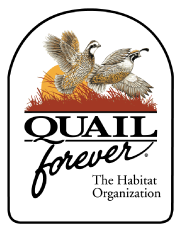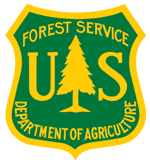Projects RSS
by
Web Editor
—
last modified
Jul 03, 2013 03:21 PM
- Presentation: Climate Metrics and Latest Design Drafts — by mmallek — last modified Mar 27, 2015 10:11 AM
- Presentation by Kevin McGarigal. Reviews new climate stressor metrics and how they were incorporated to generate a new core area network design.
- Decision Documentation (updated 03-27-2015) — by mmallek — last modified Mar 27, 2015 09:29 AM
- Mid-depth summary of decisions made throughout the full pilot process
- Agenda: Connecticut River Pilot Meeting, 12-19-2014 — by mmallek — last modified Mar 09, 2015 04:40 PM
- Agenda, Handouts and Presentation for December 19th Core Team Meeting in Hadley, Massachusetts from 10:00 a.m. to 3:00 p.m.
- Document: Notes from 12-19-2014 Core Team Meeting — by bmacdonald — last modified Mar 09, 2015 04:36 PM
- Annotated notes with selected screen shots
- Document: Summary of CT Pilot Core Team Meeting & Call, 01-05-2015 — by mmallek — last modified Feb 27, 2015 02:22 PM
- Summary of meeting to discuss connectivity layer and relationship to connectors with the terrestrial design.
- Document: January Core Team Meeting Notes/Summary — by mmallek — last modified Feb 17, 2015 10:46 AM
- Notes and summary of presentations and discussions at the January Core Team meeting.
- Presentation: Review of Restoration and How to Combine Terrestrial and Aquatic Designs — by mmallek — last modified Feb 17, 2015 10:09 AM
- Review restoration and management products; Review recommendations for portraying final combined aquatic and terrestrial core-connection design
- Document: Notes from September 22, 2014 Core Team Meeting — by mmallek — last modified Feb 13, 2015 04:47 PM
- Notes and annotations for slide presentation by Kevin McGarigal (UMass) on connectivity modeling for the CT River watershed.
- Agenda: Connecticut River Pilot Meeting, 11-21-2014 — by mmallek — last modified Feb 13, 2015 04:38 PM
- Agenda, Handouts and Presentation for November 21st Core Team Meeting in Hadley, Massachusetts from 10:00 a.m. to 3:00 p.m.
- Agenda: Core Team Meeting 01-30-2015 — by mmallek — last modified Feb 13, 2015 04:34 PM
- Agenda, Handouts and Presentation for January 30th Core Team Meeting in Hadley, Massachusetts from 10:00 a.m. to 3:00 p.m.
- 10 Key Decisions — by mmallek — last modified Feb 13, 2015 04:12 PM
- 10 major decisions made by the Core Team to date.
- Update on Connectors — by mmallek — last modified Jan 30, 2015 09:52 AM
- Presented by Randy Dettmers
- Proposed Timing and Process for Design Review — by mmallek — last modified Jan 30, 2015 09:31 AM
- Short and long-term proposed steps for timing and process of design review and finalization
- UMass presentation — by bmacdonald — last modified Dec 19, 2014 10:10 AM
- 12/19/2014 slides
- Major Decisions and Discussions from Nov. 2014 Meeting — by Scott Schwenk — last modified Dec 18, 2014 05:31 PM
- Major Decisions and Discussions from Nov. 2014 Core Team Meeting
- Poster: Connecticut River Pilot — by mmallek — last modified Dec 01, 2014 12:32 PM
- Poster on the Connecticut River Pilot Landscape Conservation Design by the North Atlantic Landscape Conservation Cooperative and UMass-Amherst
- Document: Remaining Questions and Goals/Objectives — by mmallek — last modified Nov 21, 2014 10:07 AM
- Handout for the November Core Team Meeting
- Presentation: Core Team Meeting, November 2014 — by mmallek — last modified Nov 21, 2014 10:04 AM
- Presentation by Kevin McGarigal (UMass) with updates on the Designing Sustainable Landscapes project for the Core Team Meeting
- Agenda: Connecticut River Pilot Meeting, 10-31-2014 — by mmallek — last modified Nov 20, 2014 07:40 PM
- Agenda, Handouts and Presentation for October 31st Core Team Meeting in Hadley, Massachusetts from 10:00 a.m. to 3:00 p.m.
- Document: Summary/Notes from Core Team Meeting — by mmallek — last modified Nov 20, 2014 07:38 PM
- Annotations of slides and notes from discussion during the October 2014 Core Team Meeting


























